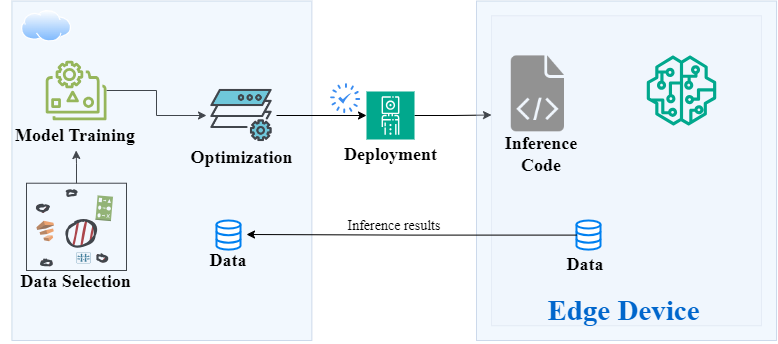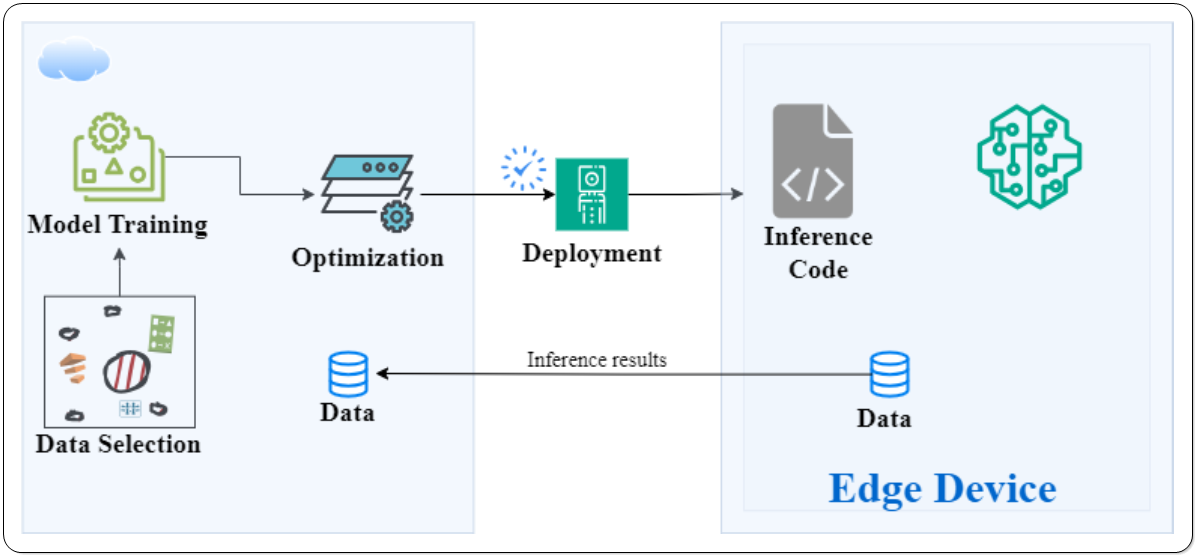EDGE MACHINE LEARNING
The focus of edge machine learning, often known as edge ML, is expanding quickly. It employs machine learning algorithms on computer devices situated at the edge of a network in order to make predictions and choices closest to the original data source as feasible. With this method also referred to as edge artificial intelligence, or edge AI predictions may be made more quickly without requiring the transfer of substantial volumes of unprocessed data across a network. Large servers are frequently used in traditional machine learning procedures to handle enormous volumes of data gathered from the Internet, but edge devices such as smartphones, tablets, and embedded systems are able to provide predictions more quickly and with less raw data transfer required.
Why is edge more effective?
Fast, secure processing power is in greater demand as consumer demands rise. With the rise in popularity of hybrid technologies and touchpoints, equipment, data, and apps must be easily accessible. Conventional processing entails moving information to far-off clouds, which may lead to problems like safety risks and latency. Without depending on conventional cloud networks, edge computing enables AI/ML-powered applications to be physically closer to data resources, allowing quicker insights, pattern recognition, and action initiation. This method produces a satisfying user experience from beginning to end.
Overview of Edge Machine Learning (Edge ML)
Identical to Edge AI, Edge Machine Learning (Edge ML) concentrates on the installation of machine learning algorithms at the network’s edge. This is how it typically operates:
Data Gathering: Edge ML uses data gathered from sensors, cameras, and other Internet of Things devices.
Preprocessing of Data: To prepare it for machine learning activities, raw data from edge devices is preprocessed.
Model Training: Instruction might be dispersed across several edge devices or conducted centrally.
Model Implementation: To facilitate local inference operations, the trained model is immediately deployed onto the edge device.
Inferences: Using the implemented model, inference operations are executed on the edge device to produce predictions or classifications.
Updates and Feedback: To maintain and enhance the model, responses from the edge device can be transmitted back to a cloud platform or central server.
Optimization: To function well on edge devices with limited resources, edge machine learning models frequently need to be optimized.
By bringing machine learning capabilities to edge devices, edge ML increases network efficiency, lowers latency, and improves privacy. AI/ML-powered apps may now obtain insights more quickly, spot trends, and take action without depending on conventional cloud networks thanks to edge computing.

Key Benefits of Machine Learning with Edge Devices
- Lower Latency: By processing data regionally, edge devices cut down on the amount of time data needs to travel to a centralized server or cloud-based processing center.
- Enhanced Security and Privacy: Edge devices handle private data inside their own boundaries, lowering the possibility of data leaks or invasions of privacy.
- Bandwidth Effectiveness: By transmitting pertinent information or insights, edge devices minimize the quantity of data that must be sent across a network.
- Offline Features: Edge devices have the ability to function and make choices even when they are not linked to central servers or the internet.
- Scalability and Reliability: By allocating processing and storage power closer to the point of data generation, edge computing enables more dependable and scalable systems.
- Cost Savings: Cost reductions are achieved through edge computing’s ability to lessen the requirement for pricey centralized infrastructure and cloud-based processing power.
- Modification and Flexibility: Machine learning models installed on edge devices are quickly updated or retrained over time, and they may be easily modified to meet the particular needs of the application.
All things considered, machine learning combined with edge devices enables enterprises to implement flexible, intelligent systems that are safe, effective, and able to function in a variety of settings and use cases.
